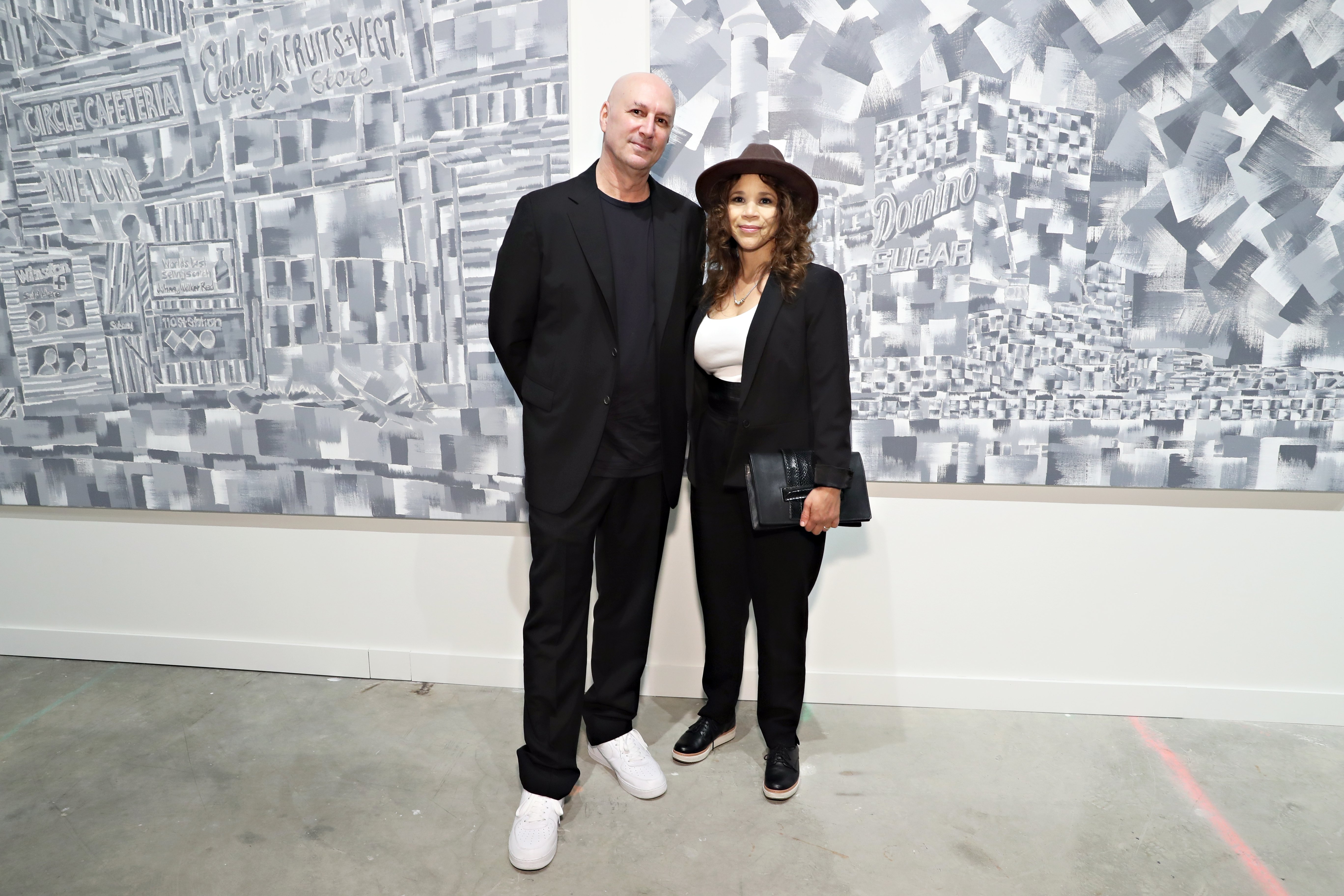
As shelter-in-place orders were enacted across the US in recent weeks, people suddenly found themselves under lockdown in unexpected places: adult children without warning back home with parents, romantic partners moving in together on short notice, and—for artist Eric Haze—an extended stay at his residency at the Elaine de Kooning House in East Hampton, New York.
“I’ve been painting every day like it was the last day that I might ever get a chance to paint,” Haze told Artnet News. “There’s just this underlying feeling that the shit could hit the fan any day.”
His stint at the residency, which was intended to last about a couple weeks, began on March 13, just as New York State started issuing restrictions on large gatherings. Haze and his wife, the actress Rosie Perez, drove to East Hampton from Brooklyn, unaware of how dramatically the world was about to change.
Perez left after the weekend, but Haze is still there, sharing space with painter and photographer Katherine McMahon, the house’s director of programming. And although de Kooning’s saltbox home is a peaceful retreat, the world outside is still in turmoil.
Eric Haze and Rosie Perez at the Elaine de Kooning House. Photo by Katherine McMahon.
“My wife is very up-to-speed on all the infectious diseases, having been on the presidential council for HIV under the Obama administration,” Haze said. “We had N95 masks weeks ago. She saw this coming.”
Haze, who got his start as a graffiti artist in the early 1970s and later transitioned to graphic design, at least has a close connection to the house: he and his sister were sitters for a 1971 portrait by Elaine de Kooning, made when he was just 10 years old. The picture—which he’s brought with him to the residency—was made in several afternoon sessions at de Kooning’s apartment near Union Square.
“I made a couple of abstract oil canvases under Elaine’s mentorship during those sessions. She would give me materials to paint while my sister was sitting,” Haze said. “I remember Elaine being firm but generous.”
Elaine de Kooning, Eric and His Sister (1972). Courtesy of Eric Haze.
Now, stuck in the Long Island home she purchased just a few years later, Haze feels like he has come full circle.
“I took this as an opportunity to pull the lens all the way back to ten years old, before I became a graffiti artist or graphic designer, and allow myself to go back and see what that fork in the road would have looked like,” said Haze. “Who might I have been instead, if I hadn’t picked up a spray can so early.”
Inspired by de Kooning, he’s been working on his first-ever series of portraits. “Obviously, Elaine as a muse and a mentor and a symbol has been incredibly powerful for me here in the space. I consider the studio a temple of sorts,” Haze added.
Eric Haze self portraits. Photo by Katherine McMahon.
“I have fallen in love with Elaine,” Haze said. “She has become my muse, she has become a guiding light, she has become a spiritual guide.”
But Haze, like everyone else, is unable to predict the future, and is unsure how long he’ll remain on Long Island.
“The world is in a crisis and I don’t really feel comfortable staying away from my wife in isolation,” Haze said. “But we have such a wonderfully supportive relationship as artists. We both understand how we need to operate to do our best work.”
“There is a fear of being trapped up here too long,” Haze admitted. “We’re all living in some kind of fear of the unknown.”